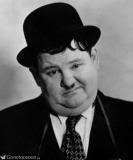While installing the final piece of trim on my galley hatch we broke one of the supports. The whole hatch doesn't fit right anymore. This is the third galley hatch that I have built and I am now quite annoyed and have no idea where to go with this.
I guess what I am asking is does anyone have any suggestions or advice for me. I am thinking about taking it to a machine shop and getting someone to build a aluminum frame for me. It would be a shame because I have built everything by myself so far and this is my first build ever.
Here is an album of the devastation.
http://imgur.com/a/o185u
Disaster struck
22 posts
• Page 1 of 2 • 1, 2
Re: Disaster struck
I haven't built a TD, so take this suggestion for what it is worth with that in mind.
It looks like your curved side supports are solid wood --not plywood. If it was me I would take the curved solid wood pieces off. Trace one onto a sheet of plywood. Repeat that tracing until you have enough plywood pieces of that shape to make new supports from. Jigsaw the pieces out. Take your plywood curved pieces and glue and screw them together to make your curved supports. Probably about three or four pieces of 1/2 in plywood glued together should make some good supports that won't break as easily.
Good luck!
Cindy
It looks like your curved side supports are solid wood --not plywood. If it was me I would take the curved solid wood pieces off. Trace one onto a sheet of plywood. Repeat that tracing until you have enough plywood pieces of that shape to make new supports from. Jigsaw the pieces out. Take your plywood curved pieces and glue and screw them together to make your curved supports. Probably about three or four pieces of 1/2 in plywood glued together should make some good supports that won't break as easily.
Good luck!
Cindy
-

Rainier70 - 1000 Club

- Posts: 1083
- Images: 244
- Joined: Wed Jan 30, 2013 4:35 am
- Location: Southeast Idaho





 You'll have no future problems. I used 3/4" Popular for my spars.
You'll have no future problems. I used 3/4" Popular for my spars.


